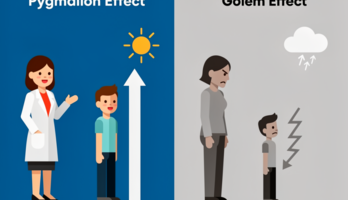150033 (621178), страница 3
Текст из файла (страница 3)
Permanent magnets are known for their large hysteresis loop and B-H curves. These curves are in the second quadrant of the loop called the demagnetization curve; this is where the magnets operate. Demagnetization curves of the PM materials are given is Fig 3.1
In all machines using permanent magnets to set up the required magnetic flux, it is desirable that the material used for permanent magnets have the following characteristics [12]:
-
A large retentivity (residual flux density) so that the magnet is “strong” and provides the needed flux
-
A large coercivity so that it cannot be easily demagnetized by armature reaction fields and temperature.
For analysis purpose, the magnet properties have to be known, the remanence flux density Br and coercivity Hc. The magnets are characterised by a large B-H loop, high Br and Hc. Table 3.1 summarizes the properties of some of the standard commercial magnets, these were estimated from figure 3.2 which indicate the demagnetization curves of different permanent magnet materials.
| Magnet | Type | Br (T) | Hc (kA/m) |
| Rare-Earth | NdFeb32 | 1.22 | 900 |
| Alnico | Alnico5 | 1.21 | 50 |
| Ceramic | Ceramic8 | 0.4 | 260 |
Table 3.1 Magnets properties
Figure 3.1 Demagnetization curves for different PM materials
The remanence magnetic flux density Br is the magnetic flux density corresponding to zero magnetic field intensity. High remanence means that the magnet can support higher magnetic flux density in the airgap of the magnetic circuit. While the coercivity Hc is the value of demagnetizing field intensity necessary to bring the magnetic flux density to zero in a material that is previously magnetized. High coercivity means that a thinner magnet can be used to withstand the demagnetization field [10].
-
3.4.1 Types of magnets
There are three main types of magnets that can be found, these are [10]:
-
ALNICO (Aluminium, nickel, cobalt, etc.)
These type of magnets poses high magnetic remanent flux density and low temperature coefficients. The coercive force is very low and the demagnetization curve is extremely non-linear. Therefore, it is very easy to magnetize and demagnetize ALNICO magnets.
-
Ceramic or Ferrites (BaFe203 or SrFe203)
A ferrite has a higher coercive force than Alnico, but at the same time has a lower remanent magnetic flux density. Their main advantage is their low cost and very high electric resistance.
-
Rare – earth (SmCO, NdFeb-Neodynium Iron Boron)
These are one of the strongest types of magnets available. They poses high remanent flux density, high coercive force, high energy product, linear demagnetization curve and low temperature coefficients. The main disadvantage is the cost.
High performance rare-earth magnets have successfully replaced Alnico and Ferrites magnets in all applications where the high power-to-weight ratio, improved dynamic performance or higher efficiency are of prime interest.
-
-
3.4.2 Factors affecting recycled magnets
The recycled magnets that will be used in this thesis were randomly picked; therefore there is no indication on how long they have been in the dumpsites. The following are the factors that can affect the strength of magnets:
-
Heat
-
Radiation
-
Other magnets in close proximity to the magnet
If a magnet is stored away from high temperatures, and from the factors mentioned above, it will retain its magnetism essentially forever. Modern magnet materials lose a fraction of their magnetism over time if affected by the above factors [8].
-
-
3.5 Generator losses
The losses in a synchronous generator consist of rotational loss (mechanical loss and magnetic loss) and copper loss in the armature winding. The rotational loss and the field winding loss are subtracted from the power to obtain the power developed by the armature. By subtracting the copper losses in the armature from the developed power, we obtain the output power of a synchronous generator.
In this section, the core loss will be discussed since they are due to the magnetic flux variations.
-
-
3.5.1 Eddy current loss
This power loss occurs in a magnetic core when the flux density changes rapidly in the core. Because core material has resistance, a power loss i2R will be caused by the eddy current and will appear as heat in the core [13].
The average eddy current loss is:
 (Eq. 3.3)
(Eq. 3.3)
where Pe is the eddy current loss in watts (W), ke is the constant that depends on the conductivity of the magnetic material, f is the frequency in hertz (Hz), δ is the lamination thickness in meters, Bm is the maximum flux density in tesla (T) and V is the volume of the magnetic material in cubic meters (m3) [14].
The eddy current losses can be reduced by [13]:
-
Using a high-resistivity core material
-
Using a laminated core, in transformers and electric machines the parts that are made of magnetic core and carry time-varying flux are normally laminated.
-
-
3.5.2 Hysteresis loss
During a cycle variation of current i, there is a net energy flowing from the source to the coil-core assembly. This energy loss goes to heat the core. The loss of power loss in the core owing to hysteresis effects is called hysterisis loss.
By testing various ferromagnetic materials, Charles Steinmetz proposed that hysteresis loss can be expressed as [14]:
 (Eq. 3.4)
(Eq. 3.4)
where Ph is the hysteresis loss in watts, kh is a constant that depends upon the magnetic material and n is the Steinmetz exponent.
-
3.5.3 Core loss
The hysterisis loss and eddy current loss are lumped together as the core loss of the coil-core assembly, and given by:
 (Eq. 3.5)
(Eq. 3.5)
-
-
3.6 Design Variables
In the following section, all the parameters that are necessary to design and construct a generator will be discussed and variables such as generator diameter, length, etc. will also be calculated.
-
-
3.6.1 Speed of the generator
The annual mean wind speed at Ga-Rampuru is approximately 4m/s [11]. The rotor will rotate at the same speed as the wind turbine; therefore this means that the rotor will rotate at:

 = 250 rad/s = 2387.3 rpm
= 250 rad/s = 2387.3 rpm
The rotor speed and the average frequency of the induced voltage are related by:
 (Eq. 3.7)
(Eq. 3.7)
Since a two-pole machine will be designed, the frequency is calculated using equation 3.9 to be 39.79 Hz.
-
3.6.2 Rotor and Stator Core
A cylindrically shaped rotor will be appropriate for this design as it allows maximum flux distribution over the armature surface as the field coils are spread over the periphery of the rotor. This type of design also accommodates the use of small cylindrical magnets [11].
A low carbon steel core with low permeability will be used in this design as it was found in the recyclable materials found in the village. This type of steel is cheap and mostly available. Compared with other better and expensive steel such as silicon, cobalt, etc. this type of steel has a very high core loss. The steel saturation flux density Bsat is estimated from the BH curve to be 1.5T.
-
-
3.6.3 Rotor Diameter (D)
The rotor diameter must be greater than the rotor yoke height (Hry), shaft radius (Rshaft) and the radial magnet length (Lm) [10].
D = 2 Hry + 2 Rshaft + 2Lm (Eq. 3.8)
In this design, D is restricted by the magnet arc radius of 25mm. Therefore D will be 50mm.
-
-
3.6.4 Rotor and Stator Yoke heights
The minimum rotor yoke height Hry is the same as the stator yoke height Hsy. The height should be large enough to avoid saturation. This also has advantages of reducing core loss and reluctance.
The minimum yoke heights are given by [10]:
 (Eq. 3.9)
(Eq. 3.9)
-
-
3.6.5 Airgap Length
The airgap length has a minimum value limited by the manufacturing tolerances; this value is typically in the range of 0.3mm to 1mm. In this design 0.5mm is chosen to be the airgap length.
-
-
3.6.6 Generator Length
The generator length is estimated to be 95mm; this is approximated from flux required to give the output voltage of the generator.
-
-
3.6.7 Airgap Flux Per Pole
In a radial machine, the flux per pole is given by:
 (Eq. 3.10)
(Eq. 3.10)
where B is the average airgap flux density, D is the rotor inner diameter, L is the generator length, Kst is the lamination stacking factor and p is the pole pairs.
For this design the average flux density per pole Bgav is equal to the peak flux density Bg since the magnet arc is close to 180 degrees. Therefore the peak airgap flux is estimated to be 0.5T at the airgap and Kst is assumed to be 0.97.
The airgap flux and the lamination stacking factors were estimated from the following dimensions of the loudspeaker magnet:
-
Magnet arc = 180 mechanical degrees
-
Inner radius = 8mm
-
Arc radius = 25mm
-
Magnet radial length = 4mm
-
Area of one pole = 706.8 μm2
From the above magnet dimensions, the flux per pole in the machine is then estimated to be 1.16 mWb this value is calculated from equation 3.10.
-
-
3.6.8 Windings
The stators of most synchronous generators are wound with three distinct and independent windings to generate three-phase power [14]. A simple layer winding was used in this design. Slot per pole per phase was chosen to be 1 and the winding pitch was full pitch.
-
Types of winding
The preferred type of winding is distributed winding as it reduces harmonics and makes better use of the stator or rotor structure. The mmf induced in the airgap is not sinusoidal, to get a pure sinusoidal mmf the number of slots have to be infinity. This means that the distributed winding is expected to have some harmonics.
Induced voltage for the distributed windings is:
 (Eq. 3.11)
(Eq. 3.11)
Kw is the winding factor and depends on the winding arrangements and has a value less than unity. Distribution factor Kd and a short pitch factor Kp reduces the winding voltage magnitudes but also reduces certain harmonics in EMF and MMF waveforms.
 (Eq. 3.12)
(Eq. 3.12)

















